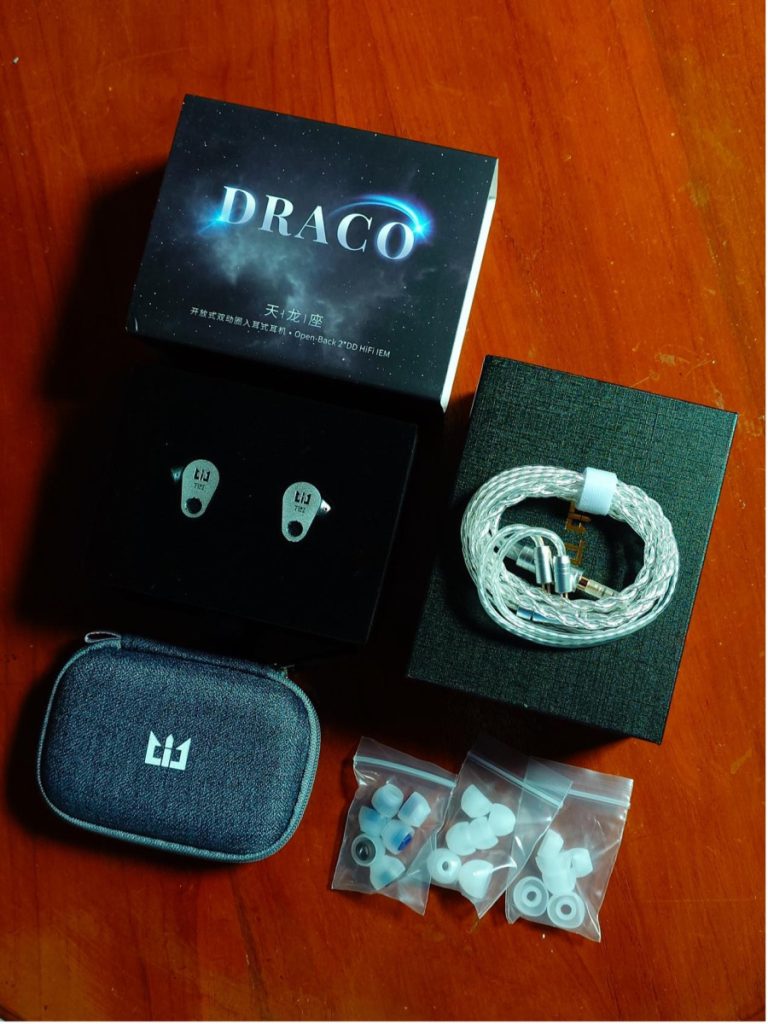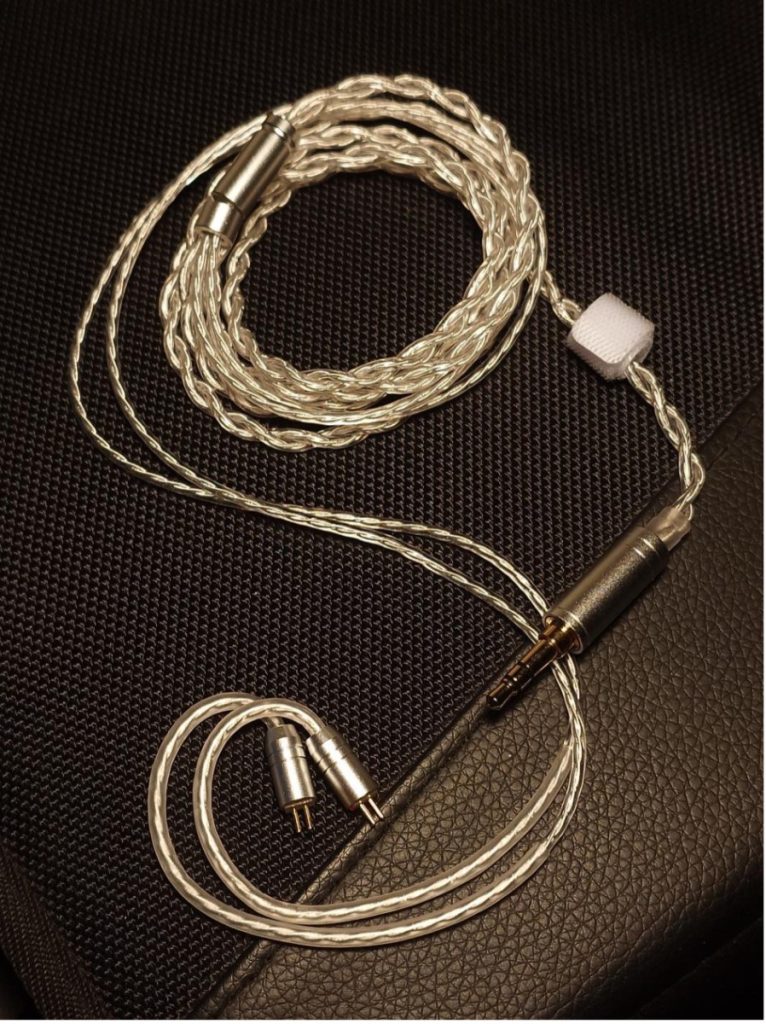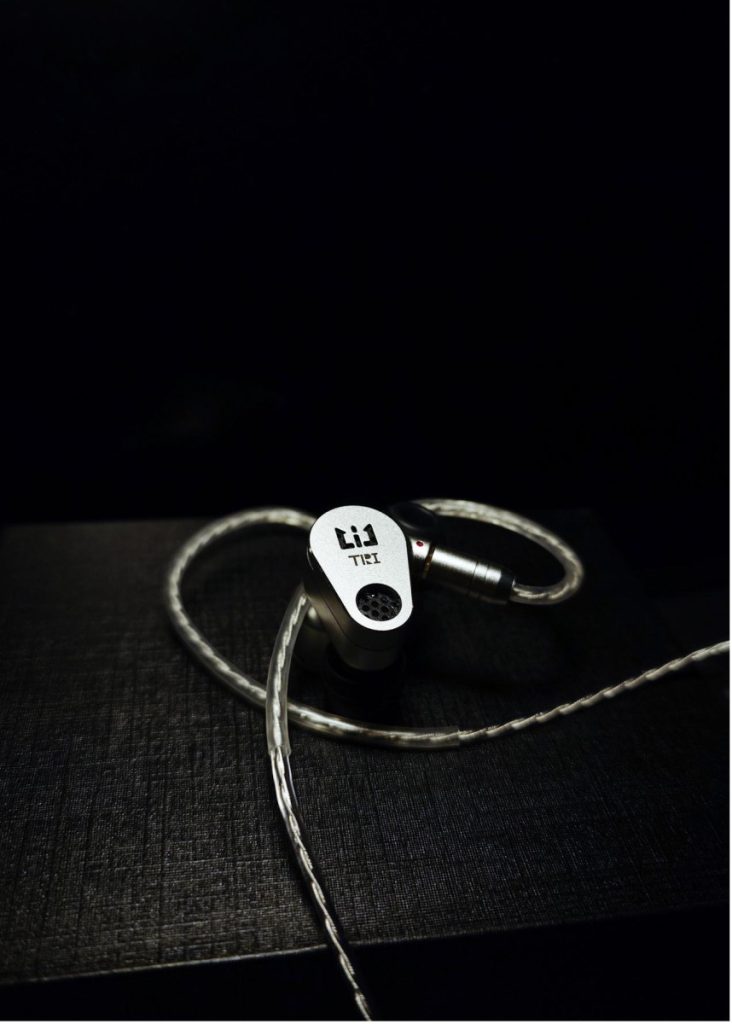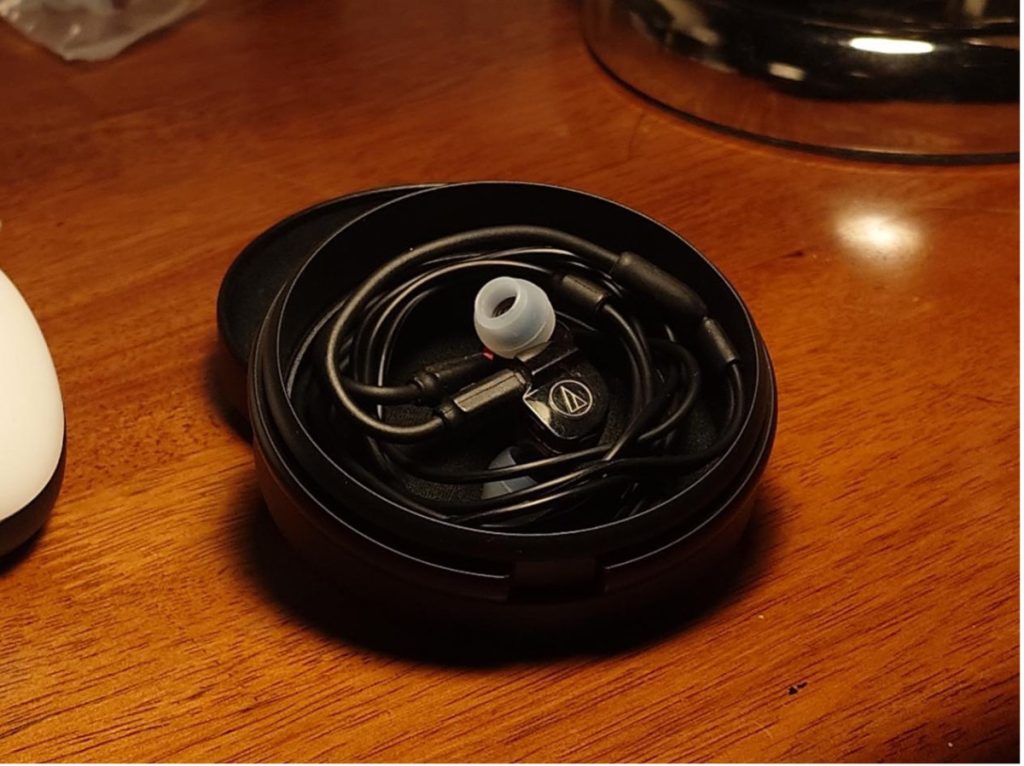Disclaimer
- The reviewed IEM is a sponsored unit by TRI Audio and KeepHiFi. Regardless, all the opinions are original ideas, there is zero influence from any 3rd party or external opinions.
- No EQ or filter presets were used during the entire review period.
- Sound evaluation are kept neutral and does not include 3rd party accessories (ie; eartips, cable, reversible mods)
Introduction
TRI Audio in recent times have been showing some great positive signs with their latest release as they have introduced the latest generation for their iconic I3-series. That is the TRI I3 Pro MKIII, which has gained the attention of reviewers and earned a couple rave feedback from end-users as well. A much needed response from TRI and KBEAR as they have not been particularly successful to cater the demand from audiophiles, especially the Chi-Fi community with the releases of TRI StarRiver, TRI iONE which I have reviewed in the past (click on the hyperlink to view), etc.
Well, since we’re in the topic about TRI Audio, here we have for review this time is an another latest pair of in-ear from them, which is the TRI Draco. Perhaps, the naming does have any correlations with the two-headed serpent from the Greek mythology? Obviously, I’m jesting. First and foremost, I would take this chance to give my appreciation to TRI Audio and KeepHiFi for their generosity to provide us a brand new unit for a review. Anyway I digress, this IEM with a shell made out of CNC aluminium alloy is priced at an affordable $59 at the time of this review. Inside the Draco features not one but two dynamic drivers as well as an open-back design which can be obviously seen through the vent holes on the face plate. Well enough said, let’s get into the review!

Unboxing Experience
Unboxing the TRI Draco was simple and straightforward. Looking at the design aspect of the packaging, there is not much emphasis on marketing flair such as illustration of the IEMs itself, etc. On the outer sleeve cardboard, there is the name of the IEM model, “Draco” on the front with some wordings below showing the driver configuration. On the top we have TRI branding and on the back you’ll find the full technical specifications list.


Separating the outer sleeve reveals a box with a TRI branding on top which contains the IEMs and miscellaneous items. As per usual, you’ll get a pair of TRI Draco sitting snug in-between a foam cut-out and also a small fabric hard case which is nicer rather than a pouch bag or nothing at all. Stored inside the hard case is a 1.2 meter silver-plated cable which we will talk more in-depth about it later and also there are three sets of eartips ranging from different types such as a set of small bore, wide bore and the much premium TRI Clarion.

Cable
Stock cable that came with the TRI Draco is an OFC silver-plated copper with four cores of braiding, it is both lightweight and feels decent nonetheless. The wires inside is protected with a transparent PVC shielding for insulation, which provides a smooth and slightly tacky texture. Casing for the connectors on both side for the 3.5mm jack and 2-pin connectors, including the Y-splitter are made out of aluminium alloy with an anodized finish. As far as I am concerned, the TRI Draco does not come in balanced connection. Hence, if you wish to use it with a balanced port you’ll have to spend a bit more to purchase a balanced cable.

Moreover, although the stock cable for the Draco is what I would consider as soft it is quite micro-phonic though and prone to tangling. Which may worsen if stored improperly or tidily after use, since the cable memory was quite poor especially near the 2-pin connectors. But that said, I didn’t have too much expectations to begin with at this price point. Still, if you wish to have a better wearing experience, I would thoroughly recommend to purchase a better quality cable.
Specifications
- Driver: 1* 6mm titanium diaphragm dynamic driver + 1* 8mm LCP diaphragm
- Impedance: 18 Ohms
- Sensitivity: 105dB/SPL
- Frequency Response: 20Hz-20kHz
- Cable: 4 cores OFC silver-plated copper (SPC), 2-pin (0.78mm) to 3.5mm
- Nozzle diameter: 5mm
Build and Comfort
Like most other TRI in-ears, the Draco features a CNC milled aluminium alloy shell which feels robust and premium. Apparently, the Draco only available in one colour option that is silver. However, the main selling point and design feature for the Draco is of course the open-back design that can be seen from the face-plate, while the drivers inside are protected through a layer of metal grill and a sheet of tuning foam by the looks of it. Even the TRI logo on each side is a part of the open-back design, one neat and lovely touch I must say. To add onto that, there are a lot of venting holes around the chassis including the one on the face-plate altogether makes it a total of 5 vent holes on each side which also prevents driver flex from occurring. Additionally, although the Draco has an open-back design, isolation wise was still pretty decent. Not completely isolated but still fairly exposed to surrounding noise. Also, air vents does not completely leak what music you’re listening to unless you’re hearing at high volume.

Apart from that, the Draco features dual dynamic-driver configurations. A single 6mm titanium diaphragm driver which most likely to be the tweeter, while the second one is a 8mm LCP (liquid-crystal polymer) diaphragm driver for the mid and low-end. The Draco was comfortable to wear for a limited duration, at least in my case since our ear anatomy varies from one another. I did find the design of the Draco creates a hotspot on the targus part of my ear after wearing the IEM for a decent 1-2 hours before taking them off, considering my ear canal requires deep insertion when using IEMs. Hence, I do wish TRI could have tapered the mentioned part slightly. Regardless, the nozzle of the Draco is measured at 5mm, which fits most ears as well as wide range of 3rd party eartips.
Test Equipment
- Local Hi-Res files > Astell&Kern SE100 M.Chat (Linear Phase Fast Roll-off Filter)
- Tidal (Master) + Local Hi-Res files via UAPP > Sony Xperia 1 V + DSEE Ultimate (ON), Dolby Atmos (OFF)
- Tidal (Master) + Local Hi-Res files via UAPP > Sony Xperia 1 V > Venture Electronics Odo (3.5mm)
Readers may be advised that other than preference and hearing capabilities, equipment variations could also result to different opinions. Thus, those with premium and much refined equipment may yield greater results.
Power Requirements
Measured at 18 Ohms and with the sensitivity of 105 dB/SPL, although the low impedance may not be an issue for most dongles or DAPs to deal with. The Draco still requires a decent amount of juice from your output even for a low volume listener like me, since most of my listening are done at an average of 56.5 decibels. I plugged it into my Astell&Kern SE100 through unbalanced which has a 2.0Vrms of output which is decent not that powerful but sufficent for IEMs. The Draco requires me to crank up the volume up to 50/150 or even 60-65/150 depending the type of files I’m listening for such DSD demands higher volume. Hence, if I would recommend to drive the Draco from balanced output if you do have access on your DAP, dongles, etc or preferably something that has more power if you could only access to unbalanced output.
Initial Impression
The TRI Draco has undergone burn-in phase for at least 48 hours prior to sound evaluation. Throughout the analysis, I paired up the Draco with a neutral source, the A&K SE100 on “Linear Phase Fast Roll-off Filter” given that it’s the most natural sounding filter compared to default. Eartips used are the TRI Clarion provided in the package. Bonus test tracks used can be found down at the end of this review.

Spacious, airy with a modestly forward midrange is how I would describe the sound coming out from the Draco. Before I could scour thoroughly on the internet for frequency response graph, my first guess was this IEM has a U-shape tuning with decent bass quantity, a slight sub-bass roll-off and a pronounced emphasis in the higher frequencies primarily in the upper-mid and treble. Which turned out fairly quite right, at least when comparing my first guess to the graph above. Tonality was a bit on the thinner side as far as I’m concerned, hence it won’t be a surprise if you would find the Draco sounds slightly thin in the mids and upper-mid. Even though I did mention that the Draco has slight emphasis on the higher frequencies. The overall tuning still provides an airy presentation, wide treble extension with spacious soundstaging as well as clarity without offending those who might be sensitive to sibilant nor excessively sharp, piercing treble even when the IEM is paired with wide bore eartips.
Low Frequency (Bass)
Bass frequencies on the TRI Draco leans more towards the warmer, north to neutral side, which focuses more on mid-bass and upper-bass delivery. Yet it does not overpower most frequencies in the spectrum apart from the lower-mid region which we’ll talk more about it after this. Sub-bass in from this IEM has a slight roll-off mainly at the very lowest part of the frequency, however this does not affect the overall sub-bass quality you’re getting from it by a huge difference. Sub-bass rumbles and textures remained clear and presented with average clarity, although it is more on the softer, polite side. Considering the tuning of the Draco was more on the U-shape rather than a Harman-esque sound signature.
Mid-bass and upper-bass from the TRI Draco sounded on the warmer side, elevated slightly above the Harman neutral curve which stretches all the way into the lower-mid which for some people might prefer it as it would give an extra warmth and colouration to the midrange. That said, this also translate to that the Draco suffers from bass bloat. Which for some who does not know what does it mean, let’s take the sound of a drummer kicking the bass drum as an example, bass bloat would mean the sound of the bass drum being kicked could still be heard after the beat has moved on. Bass slams resembled more to a slightly thick ‘thud’ which has average depth, bass impact/punch was more to a polite attack which might be a deal-breaker for those who prefer more bass quantity, however the overall bass speed was fast in terms of rapidness especially for Pop genres. Using eartips such as the TRI Clarion does help reducing the bass bloat and offers tighter response, but not entirely perhaps by EQ-ing could fix the issue to a better extend.
Middle Frequency (Mid)
Midrange on the Draco sounded articulate, presented with above average clarity and with slightly above average forwardness. The spillage from the bass frequency into the lower-mid introduces colouration and warmth into the midrange. Timbre quality of this IEM was fairly accurate, some of the instruments could be distinguished efficiently but the overall tonality, I would describe it more to the thinner side. Thus, sound of instruments like guitar or any other stringed instruments will sound slightly cold and thin. However, male vocals remains natural but for females especially for those who could reach very high notes, the Draco might come across as shrill sounding and intense especially since I suspected there is a peak around 2.5k-3kHz hence, this could result to listening fatigue for longer period of usage. Despite that, the Draco was a forward sounding IEM, the open-back design does aid in providing an open, articulated midrange experience especially in busier genres such as Jazz, Fusion Jazz and Orchestras.
High Frequency (Treble)
Treble response of the Draco was the main highlight of this IEM, as I would describe it as airy, crisp and has a lot of sparkle as well as clarity. The overall tuning for the treble was natural nonetheless, sound of hi-hats and crashes for example does not sound odd. But there is a slight smearing which one of my common gripe about dynamic drivers. However, the Draco does not sound sibilant which was a positive thing even though I am using it with the TRI Clarion, which was the included stock eartips by the way known to enhance treble and midrange. Airiness and treble extension are an abundance for this IEM, which results to a very spacious and open sound experience. That acts as a supporting role to highlight the midrange, as well as allowing the bass frequencies to sound less constricted.
Technicality
When speaking about the technicality of the TRI Draco, there are a good number of key technical features to like about this IEM. First and foremost, was the soundstaging capabilities of the Draco as I have mentioned in my initial impression, it was spacious that stretches slightly beyond my head. Thanks to the open-back design and vent holes, the overall soundstage does not feel boxy or limited, it sounds natural as what you’d get from a pair of open-back headphones. Breaking it down into much detail, the Draco presents greater soundstage depth compared to its width by a noticeable difference with decent height in a flat 2D plane. Spatial imaging was decent at best, it performed best when rendering basic movements panning from left to right but fells short in pinpointing accurately at the position of elements.
Detail retrieval on this IEM, I would honestly place it slightly above average when compared with everything I have below the US$100 mark, regardless of driver type and configurations. The Draco was able to render most high and low-level details fairly easily with satisfactory level of resolution/clarity. For example, in my usual test track A Poem Called You – TAEYEON entering the 0:46 mark into the song where I could subtly feel the texture of her low voice grunt and the weight of piano keys hitting onto the strings in the background throughout the rest of the track.
Layering and separation was pretty mediocre albeit the Draco does separate vocals quite well, it does leave other elements mashed together or in the correct term melded to each other despite this IEM has a very good soundstage depth. Lastly, wrapping it off with the dynamic range test for the TRI Draco is rated at average. Utilizing the Ultimate Headphone Test – ABYSS Headphone dynamic range test as a reference. In which explained in short, a sample sound of a drum and a bell are played simultaneously as much as 7 counts, but only the sound of the bells will become quieter. Hence, from a scale of 7 counts, TRI Draco was able to produce an audible 5 out of 7 counts.
Comparison(s)

Ø Audio Technica ATH-IM02 (US$299)
Although the two of this IEM has different driver configurations with the IM02 is a full-BA setup with 2 Sonion balanced armatures. Yet, both of these two shares a fairly similar sound signature. Albeit, the IM02 does sounds largely more neutral, flatter with a much softer and velvety midrange. Starting with the bass frequencies, it is clear that the Draco possesses a slightly bass quantity and bouncier, airy bass delivery with better extension in both sub-bass and into the lower-mid. Meanwhile, the IM02 sounded much drier in the bass, but then I do prefer the tighter and rapid bass delivery from this IEM especially when paired with the same TRI Clarion eartips. Which came to my surprise, I just knew how tremendously good this pairing was despite owning this IM02 for a long time.
In the mids, the Draco holds no contest against the IM02 in almost every aspect. Whereby, the IM02 was a lot more forward in terms of presentation with a natural, almost sort of realistic tonality coming from the dual Sonion BA units. Contra to the Draco thin mid to upper-mid, the IM02 has a more lush, warmer and overall better tonal quality.
In the treble, both of these IEMs are pretty equal, its just the matter of preference but the Draco edges it out slightly In the treble extension while sounding much brighter at the same time. The IM02, meant to be worn as a on-stage monitor was a no surprise to have small, intimate soundstage. Yet both of this IEM as equally airy sounding, with the Draco does present treble with more sparkle and brilliance, it does get a bit splashy while the IM02 does not, treble sounds much accurate, crisp, offers higher level of clarity and detail retrieval.
Eartip Combination(s)
E Pro EP00
Most significant improvement that I could hear from this pairing was the Draco now has slightly better separation. This does however sacrifice the overall openness of the soundstage slightly. Bass response sounded a bit more rounded, slightly more weighty and bold with the bass punch/slam resembling more to a soft ‘boom’ rather than a soft ‘thud’ while the speed of the bass delivery was remain unaffected, I could still experience the rapid bass attack and transient despite changing the eartips. Midrange on the Draco with the EP00, became slightly warmer and fuller but slightly more recessed which what I did not anticipated because this eartip usually enhances mid and upper-mid forwardness. Lastly, in the treble this pairing offers slightly smaller, rounded soundstage while still maintains the same level of airiness. Other than that, the Draco now sounded a touch warmer and softer, much pleasant for longer period of use. There’s slightly less sparkle but remained crisp and engaging with same level of clarity.
Azla Xelastec
These Xelastecs are known to provide extra bit of detail when paired with any IEMs and helps to enhance midrange presentation. While this was true to some degree, considering the upper-mid of the Draco was already what I would consider as fatiguing. This pairing resulted into an equally similar situation. However, the bass does sounded a lot tighter, with a touch more quantity. Treble was equally crisp, slightly less airy but sparkles and clarity were slightly more defined.
Purchasing Links and Where to Get?
KeepHiFi

Conclusion
TRI Draco, where do I even start? If you are the kind of person who prefers U-shape tuning with more emphasis on higher frequencies, large soundstage with tons of clarity, airiness and detail retrieval, this IEM will satisfy you. There are some shortcomings such as the slightly fatiguing upper-mid and bloated bass which may be a deal-breaker for some but with proper eartip pairing which I thoroughly recommend and source pairing, it could maybe fix some of the issues.
Regardless, I digress I actually like the TRI Draco as it sounded quite unique, something different compared to what I have heard over the past couple of months. Moreover, I’m fond the aluminium alloy build which the CNC quality was immaculate, clean with no sharp edges/surfaces probably slightly more ergonomic design will be appreciated. Perhaps, if TRI could kept the retune the Draco with even less bass quantity and keep the 500Hz neutral like the TRI I3 Pro MKIII or allowing 1-1.5dB elevation within that area, I would genuinely be more generous compared to my current rating. Nonetheless, it’s a positive sign from TRI Audio that they are still in the market and slowly picking up their rhythm in the Chi-Fi market that is currently so crowded with competitions. Thus, that should wrap up my review about the TRI Audio Draco, till next time!
Additional Test Tracks
Umaretate No Asa (Brand New Sunshine) – Yumi Tanimura
Anesthetize (Live) – Porcupine Tree DSD256
Vermilion – Slipknot 44.1kHz
Hunter – Björk 44.1kHz
Hollow (16-Bit Remix) – Björk 44.1kHz
La vaguelette (Original Game Soundtrack) – HOYO-MiX 44.1kHz
Kimigatame (When Suara Meets DSD 11.2Mhz) – Suara DSD11.2MHz
Just Coolin’ – Art Blakey 192kHz
Automatic – Hikaru Utada 44.1kHz
Black Hole Sun (Album Version) – Soundgarden 192kHz
Misguided Ghosts – Paramore 44.1kHz
Artemis – Lindsey Stirling 44.1kHz
